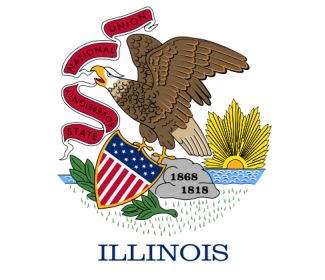 Founded in 1833, Canton Baptist Church is the largest Baptist congregation in the state of Illinois. Initially assisted by the American Baptist Home Mission Society, and afterwards involved in denominational work through American Baptist agencies, the Canton congregation by the 1850s achieved a membership of over 500, a remarkable number at that time.
Founded in 1833, Canton Baptist Church is the largest Baptist congregation in the state of Illinois. Initially assisted by the American Baptist Home Mission Society, and afterwards involved in denominational work through American Baptist agencies, the Canton congregation by the 1850s achieved a membership of over 500, a remarkable number at that time.
Former farmer and long-time Baptist pastor and denominational leader, Rev. Simon G. Miner, originally of New York, now pastors the congregation. Previously pastoring congregations in New York and Indiana, Miner had successfully helped a number of churches grow and prosper.
Like other northern Baptists, Canton church members are aware of the secessionist fever spreading rapidly in the South. And like many other northern Baptist congregations, both large and small, sacrifices will mark the fellowship during the war years.
Soon Miner will resign his position with the Canton church, choosing to leave one of the best pulpits in the state in order to serve as a chaplain in the United States army as the nation battles the Confederate States of America. Serving with the Seventh Illinois Cavalry Regiment, Miner remains a military chaplain for three years, mustering out October 15, 1864. Afterwards, he returns to pastorates in the North.
Miner’s story will be the story of many northern Baptist pastors during the war years. While northern congregations typically were not threatened by advances of Confederate forces, numerous pastors stepped down from pulpits to assist in the preservation of the United States.
Southern Christians did not have a monopoly on religious rhetoric. From northern pulpits and religious publications, ministers often positioned God as on the side of northern forces in a campaign to save the United States by liberating black slaves, and thus preserving freedom for all persons.
Sources: Gilbert S. Bailey, History of the Illinois River Baptist Association, and its Churches (Sheldon, Blakemon and Company, 1857) (link); William Cathcart, The Baptist Encyclopedia, Vol. 2 (1881), p. 798; 7th Illinois Calvary records (link)


